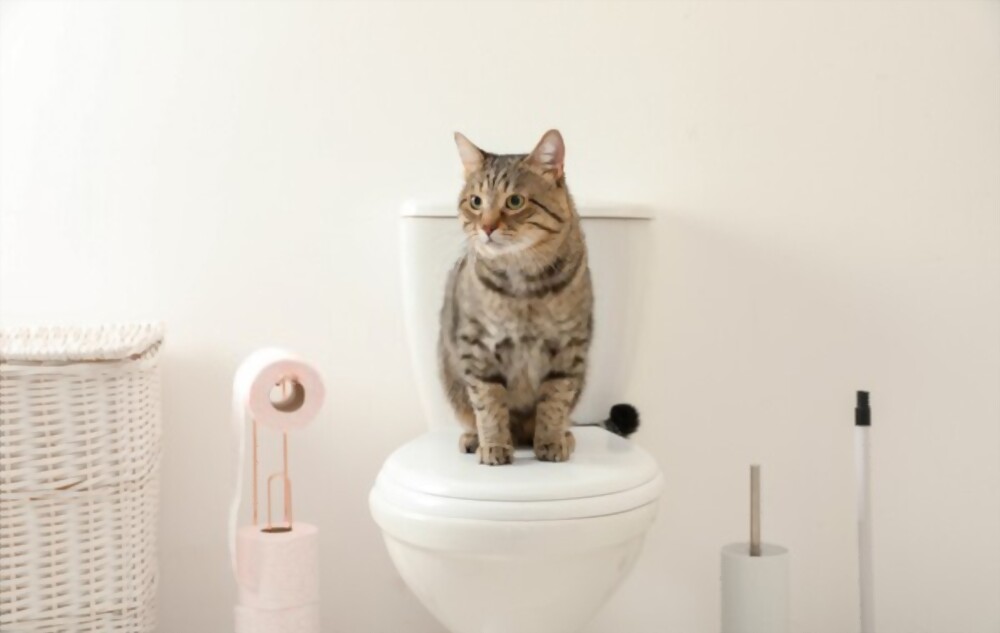Cats have always possessed an innate ability to captivate us with their mysterious and independent nature. From their enchanting purrs to their graceful movements, they have managed to establish themselves as beloved companions in countless households. One peculiar behavior that often leaves cat owners scratching their heads is their fascination with bathrooms. This phenomenon raises questions: Why do cats seem inexplicably drawn to bathrooms? In this blog, pet barn will explore the possible reasons behind this intriguing behavior.
1. Privacy and Solitude
One of the primary factors that may explain a cat’s affinity for bathrooms is the privacy and solitude they offer. Bathrooms are typically secluded spaces where humans seek solitude and retreat. Cats, being naturally curious and independent animals, are often attracted to areas where they can find tranquility and escape from the hustle and bustle of everyday life. Bathrooms provide a perfect sanctuary for cats to relax undisturbed and enjoy some quality alone time.
2. Elevated Observation Points
Cats are known for their love of heights and their inclination to observe their surroundings from an elevated position. Bathrooms, with their cabinets, shelves, and countertops, often offer prime vantage points from which cats can survey their kingdom. By perching on the edge of a sink or a shelf, cats can satisfy their natural instinct to monitor their territory and keep an eye on any potential intruders or prey.
3. Temperature Regulation
Another plausible explanation for a cat’s preference for bathrooms lies in the temperature-regulating properties of these spaces. Bathrooms often have cool tiled floors that can provide respite from the heat during warmer seasons. Additionally, bathrooms may contain heating vents or radiators that cats find particularly cozy during colder months. Cats, being creatures of comfort, are naturally drawn to environments that allow them to maintain their preferred body temperature.
4. Running Water Fascination
Many cats have an intriguing fascination with running water, and bathrooms often provide ample opportunities for them to explore this curiosity. Whether it’s the sink faucet, the showerhead, or the toilet bowl, cats are inexplicably attracted to the flow of water. The sight and sound of running water can captivate their attention, and some cats may even enjoy playing with or drinking from the tap. Bathrooms become a hotspot for feline water-related adventures.
5. Scent and Sensory Stimulation
Cats possess an exceptional sense of smell, and bathrooms tend to be filled with an array of scents that pique their interest. From soaps and shampoos to cleaning products, the bathroom is a treasure trove of intriguing odors for cats. Their sensitive noses allow them to explore and interact with these scents, providing a sensory experience that satisfies their inquisitive nature.
6. Social Interaction
While cats are often portrayed as solitary creatures, they can still crave social interaction, albeit on their own terms. Bathrooms, being a frequented area within a household, tend to be a hub of activity. Cats may associate the bathroom with their owners’ presence and view it as an opportunity for interaction and attention. This association can lead to cats following their owners to the bathroom and seeking companionship during these moments.
7. Ritual and Routine
Cats are creatures of habit and tend to thrive in environments with established routines. Bathrooms are often part of a daily ritual for humans, and cats, being keen observers, quickly pick up on these patterns. They may anticipate their owners’ bathroom visits and accompany them out of curiosity or maintain their established routines. Cats appreciate consistency and predictability, and the bathroom offers a familiar and structured environment that aligns with their preferences.
8- Playful Opportunities:
Bathrooms are often filled with intriguing objects that cats can use as toys. From toilet paper rolls to dangling cords and bath towels, these items provide entertainment and mental stimulation for playful felines.
9- Cozy Hiding Spots:
Bathrooms offer cozy hiding spots for cats seeking a sense of security or a quiet place to retreat. Cabinets, shelves, and shower nooks can become preferred hiding spots for cats to take refuge when they desire solitude.
10- Acoustics and Echoes:
Bathrooms tend to have unique acoustics, amplifying sounds and creating intriguing echoes. Cats, with their acute hearing, may find these auditory experiences captivating and stimulating.
11- Litter Box Connection:
For indoor cats, the litter box is typically located in the bathroom. Cats associate the bathroom with their bathroom habits, making it a natural destination for them to visit and explore.
Cats’ fascination with bathrooms can be attributed to a multitude of reasons, ranging from their need for privacy and solitude to the sensory stimulation provided by scents and running water. Bathrooms offer cats elevated observation points, temperature-regulating properties, and opportunities for social interaction and play. Understanding these factors can help us create a cat-friendly bathroom environment that enhances their well-being and strengthens the bond between cats and their owners. So, the next time your furry friend follows you into the bathroom, remember that their curiosity and need for comfort are the driving forces behind their intriguing behavior.

